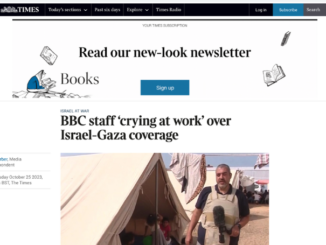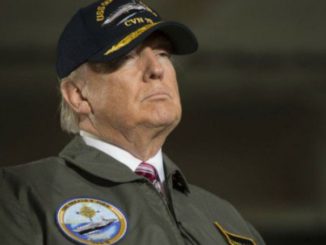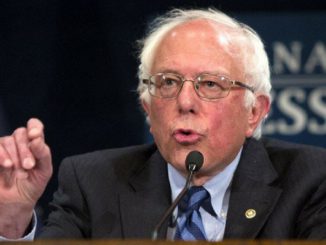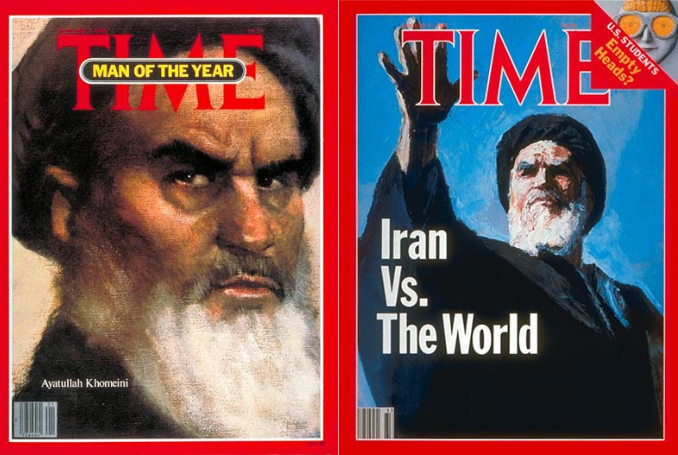
America’s quest to maintain a stranglehold on Middle East oil and the global economy has been largely left out of the corporate media’s rendering of Washington’s seven decades-long interventionist history in Iran.
Journalism has often been called the first rough draft of history. If at all true, then American press coverage of Iran, which began in earnest 70 years ago, has never gotten past the incomplete, uninformed, and inaccurate first draft version.
Both Iranians and Americans have been victims of a distorted draft; distortions that have basically remained unchanged since America’s first intervention in Iran in 1953.
The interdependence between the US government and what looks like “its” media has been readily apparent. With regard to Iran and the wider Middle East since the 1950s, the mainstream media have long engaged in deference journalism, providing the official US narrative to the American public.
America’s quest to maintain a stranglehold on Middle East oil and the global economy has been largely left out of the corporate media’s rendering of Washington’s seven decades-long interventionist history in Iran; a country US officials have always considered a “crucial piece of strategic real estate.”
The ill-fated history between the United States and Iran began in 1951. In March of that year, the Majlis (Iran’s parliament) voted to nationalize the British-owned Anglo-Iranian Oil Company (AIOC), and elected Dr. Mohammad Mossadegh, who championed oil nationalization, as prime minister shortly thereafter.
In August 1953, to maintain control over Iranian oil, British and American intelligence agencies orchestrated a coup d’etat (Operation Ajax), which led to the overthrow of the democratic government of Dr. Mossadegh and the return of the US-backed monarch, Shah Mohammad Reza Pahlavi, to the Peacock Throne.
Although broad outlines of the coup were known since the 1970s, it remained underreported in the American media until 2013, when the US government acknowledged its role and released previously classified documents, currently available in the National Security Archive. The UJ government has yet to acknowledge its part.
Included in the archive is a declassified top-secret document titled “CIA plan of action,” which outlined four phases to “affect the fall of the Mossadeq government.” According to the document, one method used to conduct a “war of nerves” against Mossadegh was to circulate “US press and magazine articles which were critical of him and his methods.”
Although the mainstream media was awash in negative representations of Iran in 1953 and after the 1978-79 Iranian Revolution, some were more censorious than others. TIME magazine, once among the most influential and trusted news sources in America and the Associated Press (AP), one of the largest global news organizations, displayed a particular chauvinism and bias in their reporting on Iran, especially during the Mossadegh era.
Many Americans eagerly awaited to hear—as a good number still do—who TIME would name “Man of the Year.” In 1951 and in 1979, Iran’s nationalist leaders were given that dubious distinction.
TIME’s anti-Iran leanings were evident on the cover and within the pages of the January 1952 “Man of the Year” edition featuring Dr. Mossadegh. The caption with his portrait read, “He oiled the wheels of chaos” accompanied by an article titled, “Challenge of the East.”
As “Man of the Year” in 1980, the Ayatollah Rouhollah Khomeini, Iran’s first supreme leader of the new Islamic Republic, was pictured on the cover with a sinister scowl and written of as “The Mystic Who Lit the Fires of Hatred.”
The language selected to portray both historic figures was emblematic of the partisan judgements, facile fiction and caricatures that filled the pages of the magazine, making Mossadegh and Khomeini seem inconsequential, yet ominous—one man “oiled chaos” and the other “lit hatred.”
TIME’s 1952 description of Mossadegh as a “strange old wizard who lives in a mountainous land,” was curiously similar to its 1980 portrayal of Ayatollah Khomeini as the “dour old man of 79” who doesn’t walk, but who “shuffles in his heelless slippers to the rooftop” (one lives in the mountains and the other shuffles to the rooftop). Lampooning their personal traits left readers with a trivialized version of events and a diminished understanding of Iran and the competence of its leaders.
In 1953 and 1979, much of TIME’s coverage was merely a reeling off and affirmation of official US government positions. They demonstrated an inability to move away from a stenographic role to recognize that what they were observing was, as observed by Iranian scholar, Ervand Abrahamian, a “classic case of nationalism clashing with imperialism in the Third World.”
Both TIME articles, although purporting to be about Mossadegh and Khomeini, were written through the lens of US economic, security and global interests based on maintaining control of Middle East oil.
The 1952 “Challenge of the East” article was written as if Iranians had no legitimate grievances, that their only motivation was hatred of the British. Mossadegh’s “challenge to the West” was simply to advocate for a fair share of the enormous oil profits that the British government had benefitted from for decades. He understood the vital importance of public control of the oil industry to the economic independence, prosperity and modernization of Iran.
The great fear of London and Washington, affirmed in the pages of TIME, was that oil nationalization in Iran, if successful, would set off a cascading effect of nationalization movements in the Middle East and worldwide, threatening their interests.
Mossadegh, the erudite Persian patriot—the Middle East’s first democratic leader—who came to represent the independence and newfound dignity of the ancient nation, was not the person Americans came to know in TIME.
The prejudicial terms used to describe Mossadegh helped set the stage for the American public’s acceptance of his ouster. Within 19 months of the 1952 publication, British and US coup plotters had returned the unpopular Shah to power, who remained servile to US interests until ousted in 1979.
The phrasing “He Oiled the Wheels of Chaos” on the cover, prepared the reader for the chauvinistic critique of Mossadegh that followed. He was marginalized as strange, old and compared to a “willful little boy;” and his methods of governing Iran—characterized as a “helpless country”—were “peculiar” and “grotesque antics.”
Mossadegh, Iranians and others in the region were diminished in the pages of TIME. Descriptions of “backward” Middle Easterners and masses of “ignorant jealous” Iranians, hateful of the West, were repeated throughout; among them, these revealing passages:
“Mossadegh, by Western standards an appalling caricature of a statesman, was a fair sample of what the West would have to work with in the Middle East….For a long time, relations with the Middle East would mean relations with men such as Mossadegh, some better, some much worse….”
“If left to ‘work out their own destiny’ without help, the countries of the Middle East will disintegrate.”
TIME accused Mossadegh of being uncompromising and of harboring a deep hostility toward America; when in reality, he looked to the United States—that had not yet interfered in Iran—as a Western power committed to democracy and self-determination.
His faith in the United States was expressed in a personal letter he wrote to President Harry S. Truman in 1951, as negotiations between the British and Iranian governments stalled and Washington was brought in to mediate. In it he described the reasons why it was necessary for Iran to nationalize its oil industry:
“The Iranian people and their Government have always considered the United States of America as their sincere and well wishing friend and are relying upon that friendship…. Concerning the nationalization of the oil industry in Iran, I have to assure you, Mr. President, that the Government and Parliament of Iran, like yourself, desire that the interests of the countries which hitherto have used the Iranian oil should not suffer in the slightest degree.”
Interestingly, in June 1951, a Senate investigative committee heard from former Secretary of War (1929-1933) and ambassador to China (1945), General Patrick J. Hurley who testified, “The danger in Iran is from an imperialistic and colonial policy and not from communism….in this dispute, the Oil company, who made enormous profits and gave a very small share to Iran, is to be blamed….”
Neither Mossadegh’s letter to President Truman nor General Hurley’s testimony found their way into the pages of TIME.
After the coup, control of Iran’s oil industry and profits from it were transferred to a consortium controlled by the US and Britain. The AIOC was officially renamed British Petroleum Company (BP) in 1954.
By 1960, not much had changed in the pages of TIME. In its September 12, 1960 edition, “Iran: Struggle for Stability,” with a long article devoted to the Shah, they continued to refer to Mossadegh with terms such as “weepy little Premier” and a man with no coherent platform, while extolling the Shah as a modernizing benevolent strongman. Rampant corruption, extreme wealth inequality, police terror, oppression and widespread Westernization under his rule, however, were rarely reported. No mention was made of the newly created oil consortium and of America’s growing influence in Iran.
The track record of the Associated Press was frequently analogous to TIME’s. Although it touts itself as the most trusted, accurate and unbiased source of news, its coverage, particularly in 1953, contained a surfeit of anti-Mossadegh bias.
The discrepancies between how Mossadegh and the Shah were portrayed was stark, especially in the clever way language was manipulated. In AP’s telling, the Shah was a “handsome 33-year-old ruler” and his wife, Soraya, a “beautiful queen.” Mossadegh, in contrast, was old, “hawked-nosed,” “weepy,” “wily” and uncompromising. Words like sophisticated, civilized, and rational were used to describe the Shah, while Mossadegh and his supporters were depicted as unruly and irrational.
In the words of AP reporter, Nate Polowetzky, who later became the organization’s foreign editor, Mossadegh’s supporters were “brawling, screaming mobs” of the Tehran streets and “sleazy bazaars.” In the same August 19 article, he dismissed Mossadegh supporters in the bazaars—who have always played a large political and economic role in Iran—as “little merchants.”
Years later, Ayatollah Khomeini fared no better in the pages of TIME. The reproving lexicon used to portray Mossadegh was recycled in the 1980 “Man of the Year” edition. Khomeini was presented as a “religious mystic” an “austere theologian” devoted to “simple ideas he has preached for decades.” And Iran, with a 2,500-year-old civilization, was discounted as a “deeply backward” country.
The editors, who referred to Khomeini as an “improbable leader,” failed to understand that he was indeed a very probable leader for his country. In a culture, like Iran, that respects elders, values leaders who guard Iranian sovereignty, and where mosques have historically been sanctuaries in which political dissent could be openly manifested, Khomeini embodied the exigencies of that historic moment.
The fear expressed in the 1950s that Iran might become a model for other countries wanting to shed the yoke of foreign domination was revived in 1979. To subvert Iran’s influence, TIME branded the revolution with phrases such as a “spectacle of a rebellion, “anti-Western fanaticism” and idly claimed that terrorism had become adopted policy of the new government.
What TIME took no account of was the remarkable fact of how swiftly Iran had reincarnated itself after the revolution and how it successfully organized a nascent government with a written constitution after 2,500 years of monarchical rule.
While most school children in Iran know the basic facts about America’s 1953 campaign to install a pro-Western government in Iran, most adults in the United States do not. Washington has always been aware of the historic importance of Iran’s efforts at national sovereignty in the 1950s and 1970s, not only as examples to other countries, but also because they challenged US hegemonic interests in the Middle East.
The corporate media, in service to official Washington, has obscured the truth of 1953 and 1979. Menacing, irrational and terrorism are all terms that have become the media’s reflexive nomenclature when reporting on Iran today.
For the people of Iran and the Middle East, the sentiments of John Foster Dulles, President Dwight D. Eisenhower’s secretary of state (1953-59) and 1953 coup d’etat overseer, signaled what the future relationship of American administrations and their media enablers would be—“The United States of America does not have friends; it has interests.” The language of many in “its” media continues to reflect, trumpet and mainstream that belief.
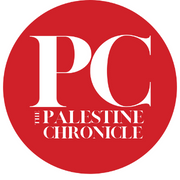
– Dr. M. Reza Behnam is a political scientist specializing in the history, politics and governments of the Middle East. He contributed this article to The Palestine Chronicle.



